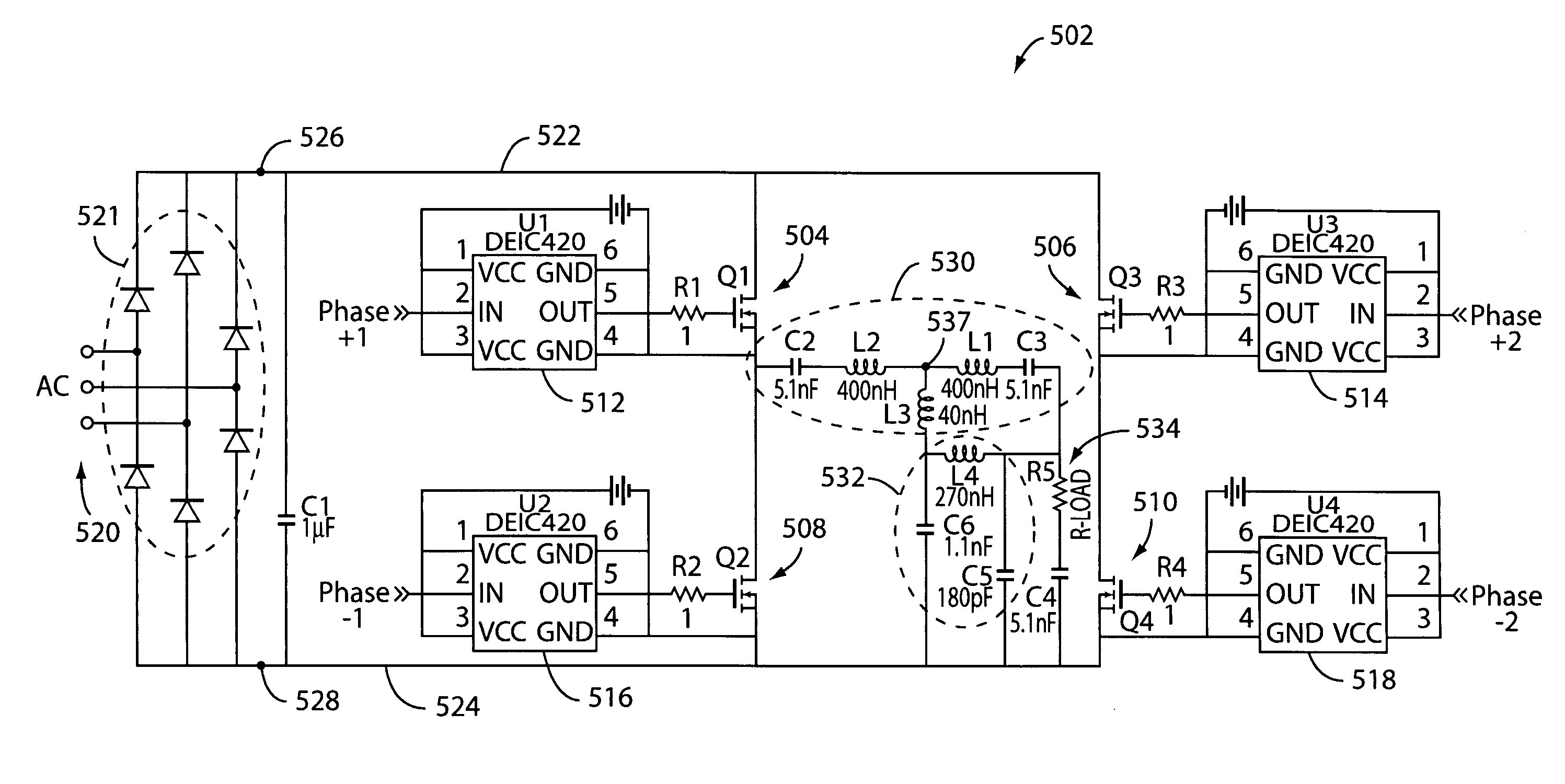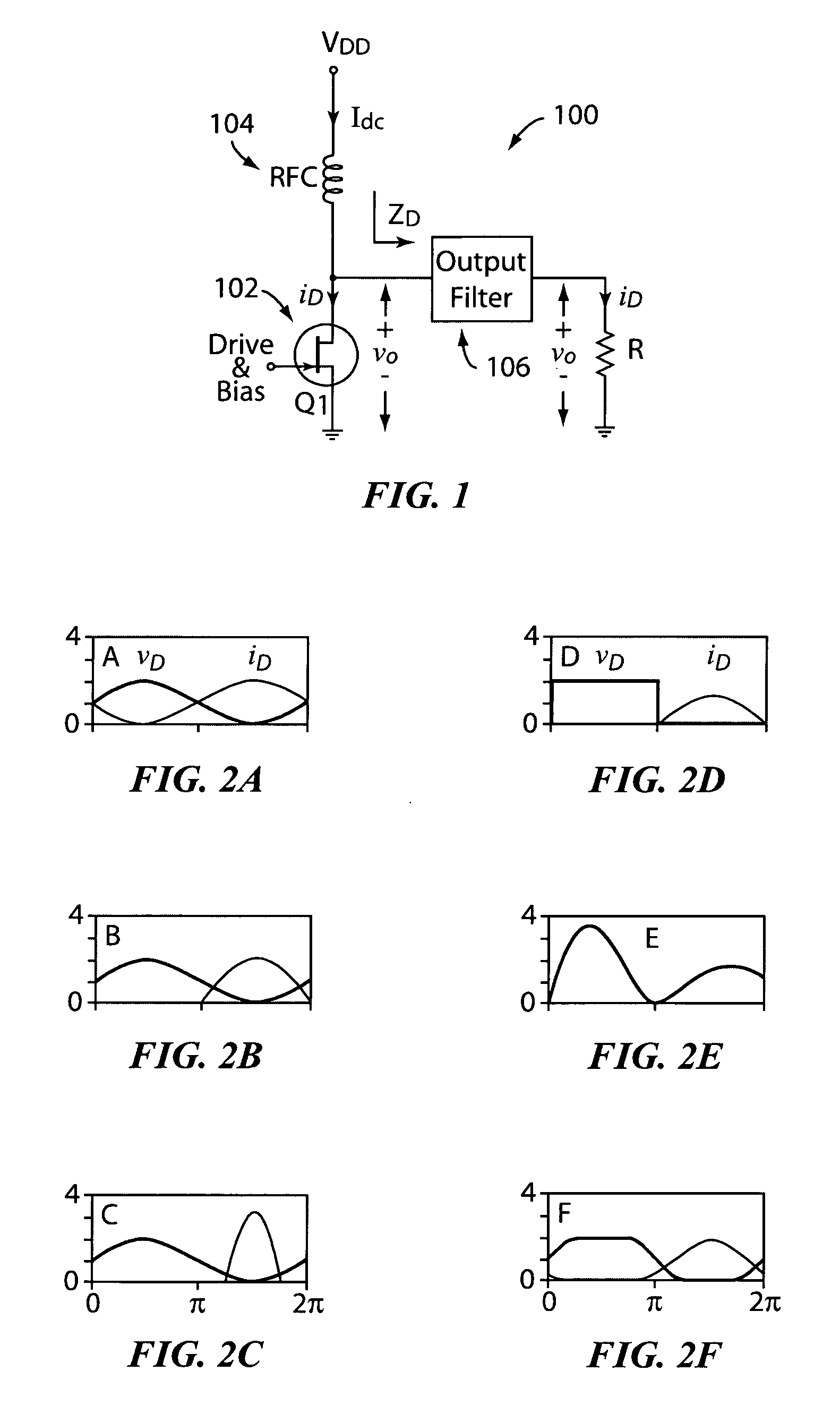RF generator with phase controlled mosfets
a phase control, mosfet technology, applied in the direction of electric variable regulation, process and machine control, instruments, etc., can solve the problems of linear amplification, loss of class-d devices, power loss proportional and direct frequency increase,
- Summary
- Abstract
- Description
- Claims
- Application Information
AI Technical Summary
Benefits of technology
Problems solved by technology
Method used
Image
Examples
Embodiment Construction
[0036] The present invention relates to an RF generator that has a full bridge configuration. The full bridge configuration comprises high voltage MOSFETs that are operated using phase shift techniques.
[0037] The present embodiment relates to an RF generator operating at an ISM frequency, e.g., 13.56 MHz, as disclosed in U.S. patent application Ser. No. ______, entitled, “RF Generator With Reduced Size and Weight,” filed on May 27, 2005, and U.S. patent application Ser. No. ______, entitled, “RF Generator With Commutation Inductor,” filed on May 27, 2005, which are both assigned to the assignee of the present application, and which are both incorporated by reference.
[0038] The RF generator uses a high voltage phase shift controlled full bridge. A full bridge design offers several advantages which are helpful in RF operation. These include a higher utilization of the MOSFET ratings. In a bridge design, the voltage is limited to the supply rail (e.g., positive rail), whereas it is n...
PUM
 Login to View More
Login to View More Abstract
Description
Claims
Application Information
 Login to View More
Login to View More - R&D
- Intellectual Property
- Life Sciences
- Materials
- Tech Scout
- Unparalleled Data Quality
- Higher Quality Content
- 60% Fewer Hallucinations
Browse by: Latest US Patents, China's latest patents, Technical Efficacy Thesaurus, Application Domain, Technology Topic, Popular Technical Reports.
© 2025 PatSnap. All rights reserved.Legal|Privacy policy|Modern Slavery Act Transparency Statement|Sitemap|About US| Contact US: help@patsnap.com



